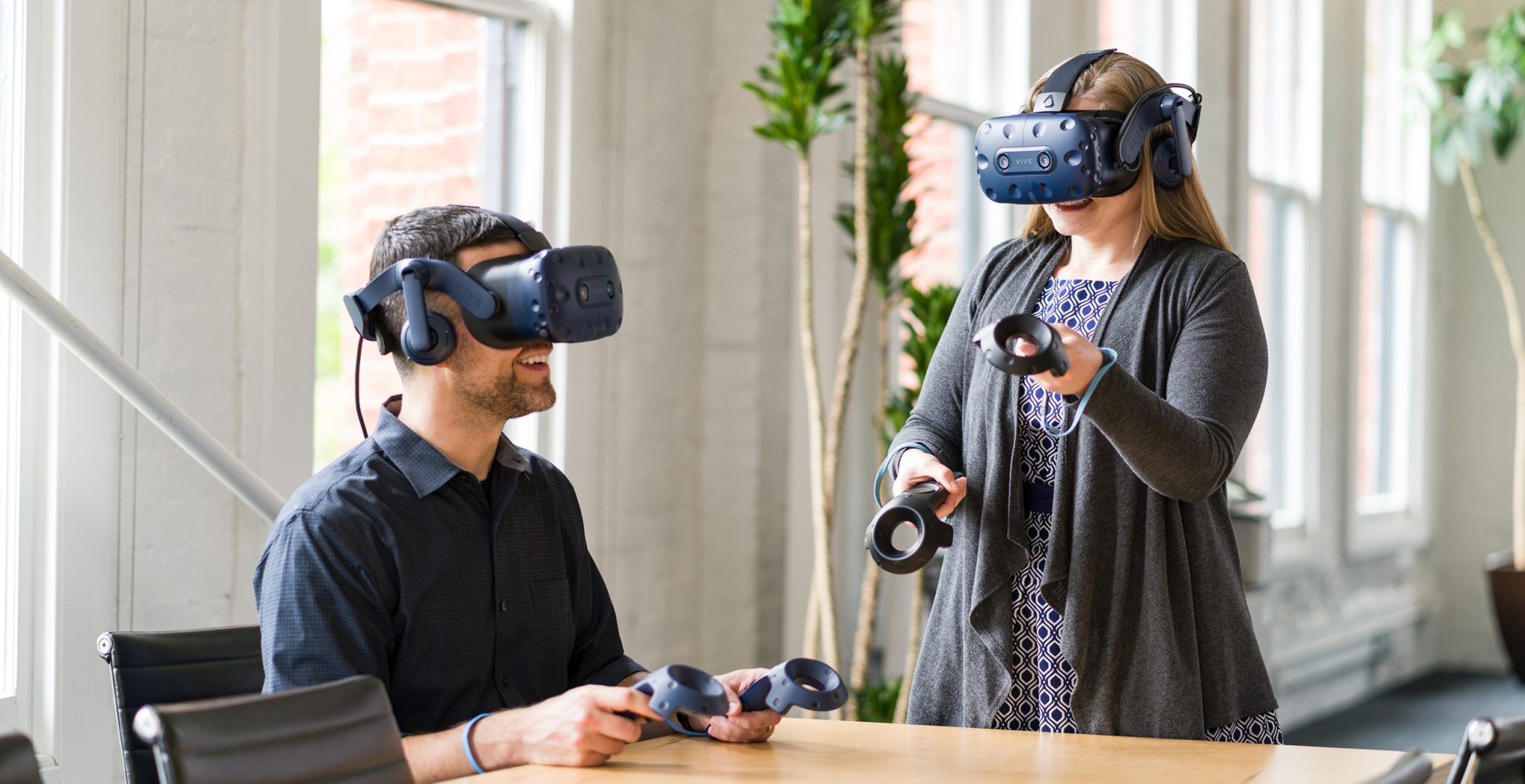Understanding Virtual Reality Therapy Virtual reality (VR) is a cutting-edge technology with the ability to immerse individuals in virtual worlds using specialized headsets. It offers users a chance to escape reality and engage with their surroundings in a remarkably lifelike manner. One of the key attractions of VR is its capacity to replicate environments and
Understanding Virtual Reality Therapy
Virtual reality (VR) is a cutting-edge technology with the ability to immerse individuals in virtual worlds using specialized headsets. It offers users a chance to escape reality and engage with their surroundings in a remarkably lifelike manner. One of the key attractions of VR is its capacity to replicate environments and experiences that might otherwise be inaccessible in the real world. Whether traversing fantastical landscapes, embarking on thrilling adventures, or engaging in virtual social interactions, VR has the potential to revolutionize the entertainment industry and enhance interpersonal connections. Beyond entertainment, VR holds promise for a variety of applications.
In healthcare, it has proven to be a powerful tool for pain management and rehabilitation. Through immersive and engaging experiences, VR can aid patients in diverting attention from pain, lessening anxiety, and overall improving well-being. Whether guiding individuals through therapeutic exercises, offering relaxation techniques, or providing virtual distractions during medical procedures, VR has the potential to enhance the quality of care and outcomes for those coping with pain and medical conditions. In conclusion, virtual reality is not just a source of amusement; it has the potential to transform multiple industries, particularly healthcare, by offering innovative ways to engage, interact, and promote the well-being of individuals. The possibilities with VR are limitless, and as technology progresses, we can anticipate even more exciting applications and benefits in the future.
How Does VR Help with Pain?
Reflecting on a moment when you’ve experienced the sharp discomfort of stubbing your toe, the initial intensity of pain can be overwhelming. The sensation coursing through your body can leave you grimacing in agony. However, as you become engrossed in another activity – such as watching a humorous video on your phone or engaging in a conversation with a friend – the pain gradually diminishes. It recedes like a wave, providing a sense of relief and gratitude for the diversion.
This is where virtual reality (VR) technology can make a significant impact. By immersing yourself in a digital environment featuring captivating visuals and immersive audio, you can escape the physical discomfort of your injury. The virtual world serves as a sanctuary, where the pain becomes distant and muted. Some experts liken VR to a “gate” that effectively blocks pain signals from reaching your brain, enabling you to shift your focus away from the throbbing ache in your toe.
Therefore, the next time you find yourself in discomfort, whether it be from stubbing your toe or a severe headache, consider donning a VR headset. Allow yourself to be transported to a realm where pain takes a backseat to fascination and delight. Embrace the distraction and feel the relief wash over you like a soothing balm. In the landscape of virtual reality, pain becomes a mere inconvenience.
Different Types of Pain and How VR Can Help
Virtual reality therapy has demonstrated efficacy in the treatment of various forms of pain, whether chronic or acute. Individuals suffering from conditions like back pain or burns can benefit from the pain relief and emotional support offered by VR therapy. In cases of chronic pain, VR therapy can help individuals regulate their emotions and find calmness by immersing them in a virtual environment that serves as a distraction from their discomfort.
Similarly, for acute pain such as burns, VR therapy can provide immediate relief by redirecting the individual’s focus away from the pain, thereby reducing its perceived intensity. Furthermore, virtual reality therapy has shown effectiveness in addressing mental pain, such as depression and anxiety. Through exposure therapy using VR, individuals can confront their fears in a safe and controlled environment, gradually reducing their symptoms over time.
VR therapy has also proven successful in helping children overcome fears like needle phobias by creating a less intimidating environment for medical procedures, resulting in reduced anxiety and fear during the experience. Overall, the adaptability and effectiveness of VR therapy in pain management make it a valuable tool for improving both physical and emotional well-being.

Image by: Yandex.com
The Benefits of VR for Pain Management
Virtual reality (VR) technology has transformed the field of pain management by providing a non-invasive alternative to traditional methods. Unlike invasive procedures such as surgeries or injections, VR therapy offers individuals a safe and enjoyable way to alleviate chronic pain.
By immersing users in virtual environments and diverting their attention from physical discomfort, VR has proven to effectively reduce pain levels without the need for medication. One of the key advantages of VR therapy is its interactive nature, allowing users to actively participate in their pain management journey. Through engaging activities and simulations,
VR helps individuals shift their focus away from their pain, resulting in a decrease in perceived levels of discomfort. This active engagement also fosters a sense of control and empowerment over one’s pain, ultimately enhancing overall well-being and quality of life.
Furthermore, VR therapy has the potential to decrease reliance on pain medications, such as opioids, which carry the risk of side effects and addiction. By offering a drug-free alternative, VR therapy provides a safe and sustainable option for individuals seeking to avoid the challenges associated with long-term medication use.
In a nutshell, the non-invasive approach, interactive features, and potential for reducing medication dependency make VR therapy a compelling choice for individuals searching for effective pain management solutions. With its ability to provide relief in a safe and enjoyable manner, VR technology has the capacity to greatly improve the lives of those living with chronic pain.
The Future of VR in Pain Management
Virtual Reality (VR) is a new technology that is being used to help manage pain. It is still being developed, but so far it has shown great promise. More hospitals are starting to use VR to help their patients, and it is becoming more affordable.
VR is a safe and effective way to manage pain, which is important because of concerns about people getting addicted to pain medications. Using VR can help people feel better without the risk of becoming dependent on drugs. This is good for patients and also helps with the larger problem of too many people getting addicted to opioids.
The use of VR for pain management is a big step forward in healthcare. As more research is done and more hospitals use VR, it can improve patient outcomes and reduce the need for opioids. VR is effective, affordable, and safe, and has the potential to change the way we deal with pain in the future.
Challenges and Opportunities
The integration of Virtual Reality (VR) technology into healthcare practices presents various challenges that must be overcome in order to ensure patient safety and treatment efficacy. In particular, meeting healthcare standards is crucial for the successful implementation of VR in medical settings.
Ongoing research is essential for fully understanding the potential and limitations of VR therapy in healthcare. Despite the obstacles, the future of VR in healthcare appears promising. Continuous advancements in VR technology are anticipated to lead to increased utilization of VR for pain management and a variety of other medical applications.
As healthcare professionals become more familiar with the advantages of VR therapy, its acceptance and usage are likely to expand in the future, potentially transforming the treatment of various health conditions by offering patients a more immersive and effective form of therapy. The potential applications of VR in healthcare are limitless, and its integration into mainstream medical practice may be imminent.
The advent of Virtual reality (VR) technology has brought about a paradigm shift in the way we engage with our surroundings. While commonly associated with entertainment, VR’s applications extend far beyond that realm. In the healthcare sector,
VR has proven to be a groundbreaking tool for pain management and enhancing the quality of life for patients. By immersing themselves in virtual environments, patients can effectively mitigate physical discomfort and reduce pain levels, particularly beneficial for those managing chronic pain or undergoing rigorous medical treatments. Moreover,
VR technology is revolutionizing medical training by enabling students and professionals to practice intricate surgical procedures in a safe and controlled virtual setting. This not only enhances the skillset and confidence of healthcare providers but also elevates patient safety and treatment outcomes.
The utilization of VR in healthcare signifies a significant leap forward into the future of patient care, with endless possibilities for advancement. The transformative impact of VR in medical practices is poised to revolutionize healthcare and elevate the standard of patient care across the board.
















